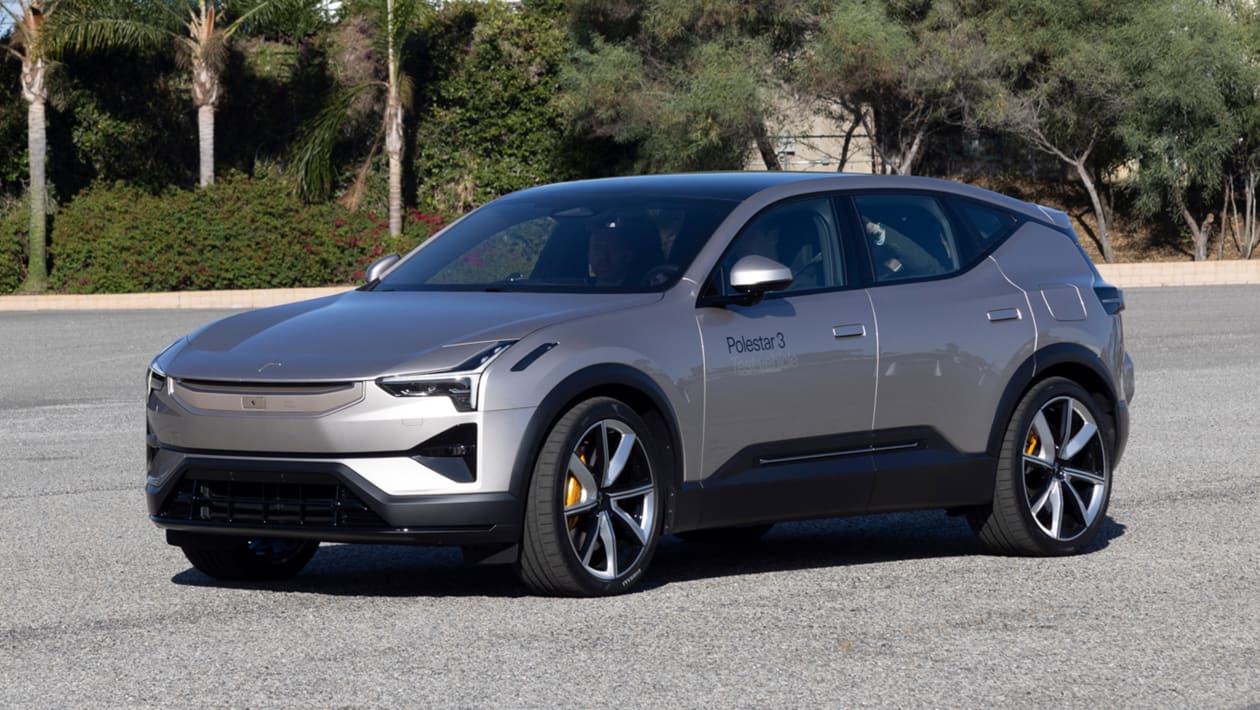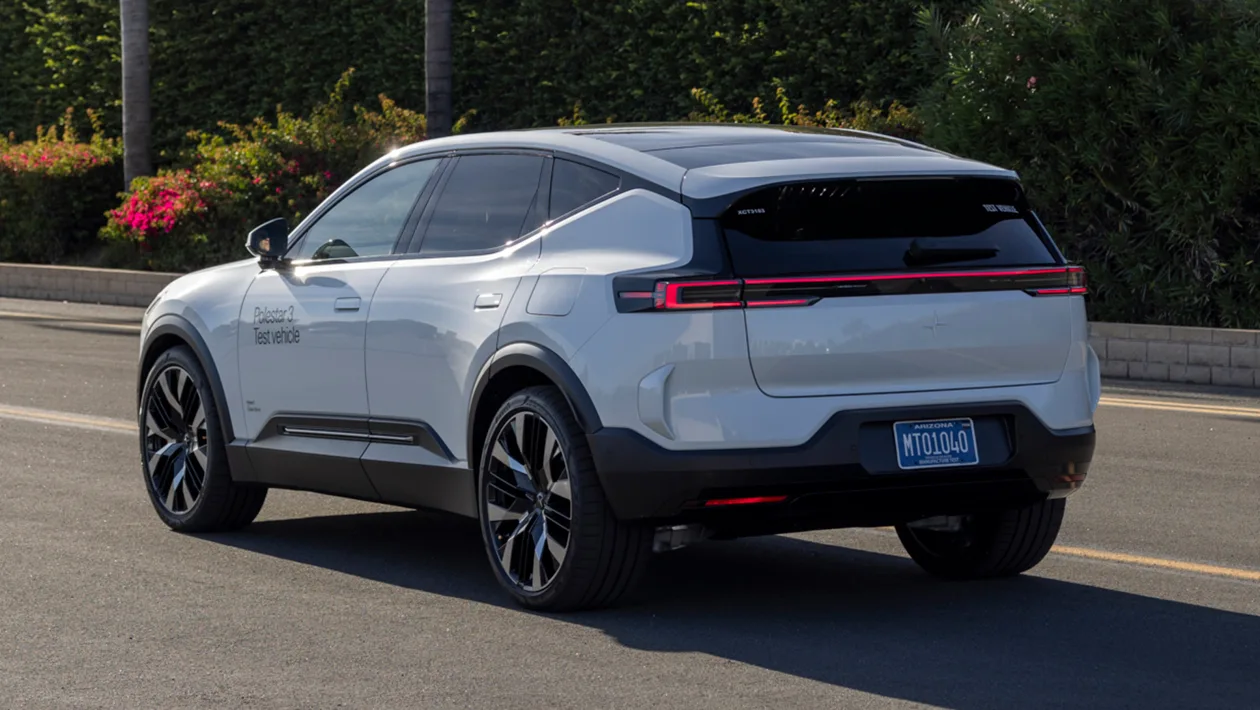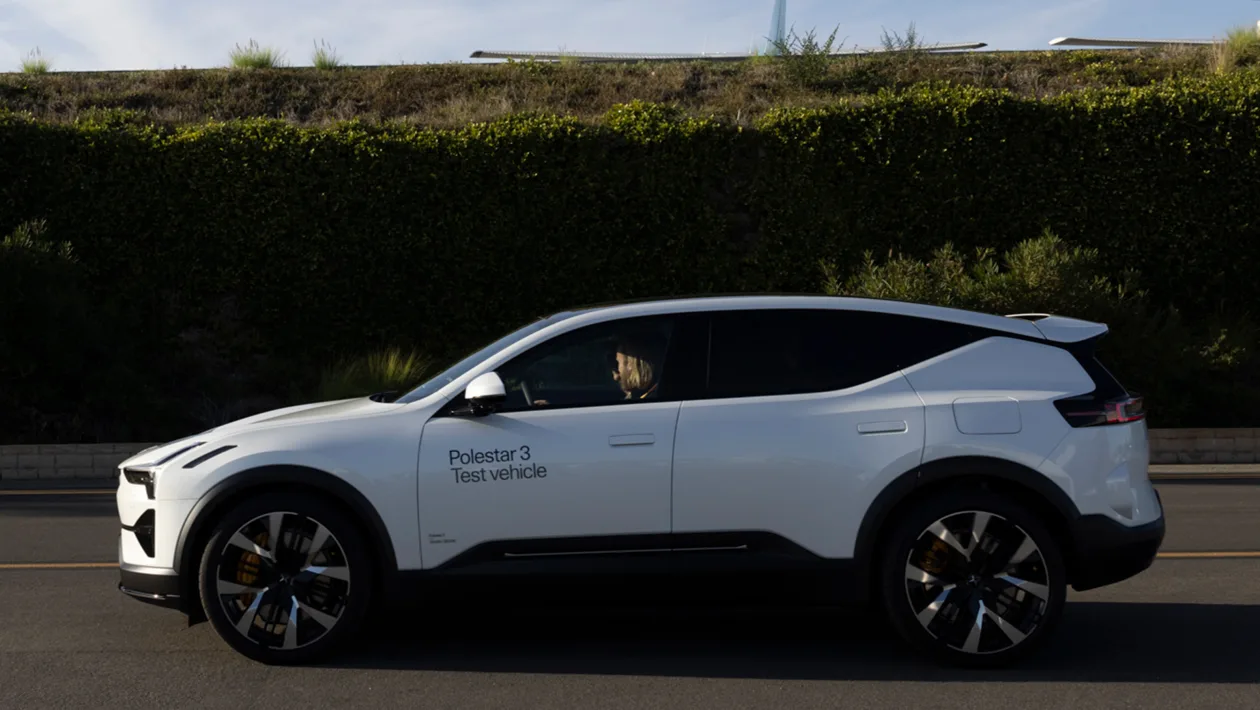The Polestar 3 will be the Swedish brand’s next fully-electric model when it hits the Australian market in 2024.
The high-end electric SUV market is hot stuff at the moment with the likes of the BMW iX, Audi Q8 e-tron and Mercedes EQE more recently joined by the Volvo EX90 and Lotus Eletre. Now Polestar is throwing its hat into the ring in the shape of the Polestar 3.
The 3 arrives as the first in a new generation of Polestar models using a new electric car platform and a high tech interior.
Sharing its SPA2 platform with the new Volvo EX90, the Polestar 3 has a slightly smaller footprint than the BMW iX. It has a dual-motor, electric powertrain producing 360kW and 841Nm in standard form for a 0-60mph (97km/h) time of 4.9 seconds. The more potent Performance Pack model ups the ante to 380kW and 910Nm of torque, trimming the 0-60mph time to an estimated 4.6 seconds. Both versions top out at 209km/h.
All Polestar 3 models come equipped with a 107kWh (usable) battery pack. That’s good for a claimed range of 610km, although the Performance Pack drops that figure to 558km. The battery can be topped up from 10 to 80 per cent in 30 minutes thanks to the car’s 250kW charging capability, and there’s bi-directional charging that can feed power back into the grid.
Despite the 3’s 2584kg kerb weight, Polestar has utilised an array of advanced chassis technologies to inject the car with some degree of athleticism. For example, the rear electric motor is a torque vectoring dual-clutch unit, and adaptive dampers have been fitted as standard. Dual-chamber air suspension also features, with Performance Pack models receiving a bespoke suspension calibration and 22-inch forged alloys for sharper dynamics.
The Polestar 3 exterior design is recognisably Polestar. The firm has taken inspiration from the Precept concept car that will directly spawn the Polestar 5 four-door coupe in 2025 to deliver a sharply styled package with an emphasis on aerodynamics.
While the Polestar 2 and forthcoming Polestar 4 tread a design line between SUVs and conventional cars, the Polestar 3 is very much an SUV in its look and dimensions. The front features a slim aero bridge that feeds air over the bonnet bookended by Polestar’s familiar T-shaped headlights. Black lower panels on the bumpers and sills provide protection and accentuate its SUV style.
The roofline tapers into a neat rear spoiler – again, for improved efficiency – there’s a slim rear light bar that doubles back on itself at each side and “aero blades” at the outer edges of the bumper.
The 3 uses a development of the Android Automotive infotainment system from the Polestar 2. A high resolution 14.5-inch portrait touchscreen sits in the centre of the dashboard, and over-the-air updates are designed to enable software improvements throughout the car’s lifecycle.
Initially, all Polestar 3 models will receive the Plus Pack as standard, which brings a host of extra equipment such as soft-closing doors, cabin air filtration, heated rear seats and a 25-speaker Bowers & Wilkins stereo. With a 484-litre boot, the Polestar trails the BMW iX by 16 litres, but it does offer a 32-litre front storage area – unlike its German rival.
A 9-inch instrument panel sits behind the steering wheel, and the cabin is finished using a blend of sustainable materials that include MicroTech fabrics, fully-traceable wool and animal welfare-certified leather. The Performance Pack adds flashes of gold inside, and all Polestar 3’s will arrive with a panoramic glass roof, ambient lighting, a 360-degree parking camera and a vast suite of driver assistance features.
These include a radar system which can scan for children or pets inside the car and adjust the climate settings accordingly, and an eye-monitoring camera to detect driver fatigue. A Pilot Pack will also be fitted to launch cars, which adds a parking assist function, adaptive cruise control and a head-up display
In total, there are five radar modules on the Polestar 3, together with five external cameras and twelve ultrasonic sensors to facilitate the operation of the safety systems. From 2025 these will be expanded with the optional Pilot Pack with LiDAR that includes three extra cameras and four additional ultrasonic sensors to scan the environment in real time. The plan is for LiDAR to support the possibility of autonomous driving further down the line, and Polestar has indicated that it may offer some autonomous features via a subscription service.
We were given the chance to take a short passenger ride in the Polestar 3 following the 2023 Polestar Day event in Los Angeles. The interior is well finished with Polestar’s use of various sustainable materials providing a distinctive look with attractive contrasting textures. It all feels suitably upmarket, if slightly gloomy in the model we tried with the MicroTech Charcoal upholstery. The lighter coloured leather trim options look more visually appealing but are an upgrade and may bring their own problems when it comes to keeping the interior clean.
Whatever you think of the decor, there’s absolutely no shortage of light inside thanks to the enormous glass roof, but the 3 does have a problem with rear visibility – a consequence of its huge C-pillars creating significant blind spots. In its Polestar 4 coupe-SUV, the brand has done away with the rear window entirely in favour of a video feed from a rear-facing camera, and in the 3 drivers may find themselves relying heavily on the external cameras when reversing.
Interior space is generous with plenty of room for adults in the rear, even behind the particularly well padded and bulky front seats that clearly borrow expertise from those masters of seating comfort at Polestar’s sister brand Volvo.
We also came away impressed with the touchscreen interface where the Google-sourced software and crisp graphics combine to great effect. The climate controls are always available at the bottom of the screen, there are large areas to press for the key controls and the responses to touch inputs seem fast.
The pre-production car we rode in was a standard model with the air-suspension in its regular setting. The ride felt reasonably well-damped over rough tarmac, but from the rear seat it was on the firm side and we could detect a slight seesawing motion front-to-rear as the suspension dealt with larger bumps. We’d expect a family SUV to deliver a more composed ride, and hopefully final suspension calibrations will address this in the production versions.







